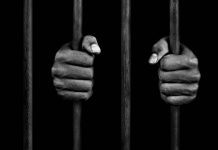This article was written by Smaranika Sen from Kolkata Police Law Institute. This article deals with the prison system in India.
Table of Contents
Introduction
Whenever someone does any act which by law they are forbidden to do or refuses to do any act which by the law they are bound to do, then it can be termed as a crime. The punishment for most of the crimes is imprisonment. The place where the convicted is imprisoned is known as the Prison. Section 3 of the Prisons Act, 1894 gives us a proper definition of prison. In simpler words, we can say that a prison is a place of confinement for the convicted persons.
Evolution of prison system in India
Present scenario
The present scenario regarding our prison system has changed a lot compared to ancient and medieval times. In ancient times, imprisonment was prevalent but they were used only for the detention of the wrong-doer till his trial or the judgment delivered. It was believed that imprisonment was the easiest means of punishment. The prison system was not a regular mode of punishment in ancient India. At this time, there were no such penal laws that were followed. Society’s law and peace solely depended on the principles of Manu.
Medieval India and ancient India
In medieval India, the condition of the prison system was as similar as the system in ancient India. During this time, the Quran was considered the source of law. The system of differentiating crime was prevalent. Crimes were divided into three different groups i.e. crime against god, crime against state, and crime against private person. Here also, the prisons were only used for detention.
During the ancient and medieval periods, the prison system in India had no specific rules for the maintenance and proper functioning of the prisons. There were no services for prisons. Even there was no arrangement of any food for the prisoners. According to Hieun Tsang, the treatment of the prisoners was very harsh and violent. Lastly, there was no existence of prisons in the modern sense.
British period
During the British rule in India, the prison system was used as a mode of punishment for criminals. This form of punishment abolished the old barbarous forms of punishment. However, the condition of the jails was still the same as it was during the Mughal era. The British administration thought to improve the condition of the jails and bring reformations in the working of the prison system. In the year of 1835, Lord Macaulay suggested the Legislative Council of India appoint a committee to look after the conditions of the jail. The Legislative Council of India appointed a committee named
The Prison Discipline Committee: The committee submitted its first report in 1838. The report pointed out the drawbacks of the jail administration in maintaining discipline among the prisoners. It also pointed out the ill condition of the jails. It rejected all forms of punishment that involved religious and moral schooling. The report created a landmark change in the prison system of India. This led to the penal administration in India.
In 1870, an initial draft of the prison act was passed, which stated that the jails should have a Superintendent, a medical officer, a jailor and if required any subordinate officers. It also stated that the female, male, and children prisoners should be kept separately. The Act also stated the duties and powers of the prison officers. In 1877 and 1894 an inquiry committee was constituted. On their proposal, the Prisons Act 1894 was passed. This eventually led to huge progress in the prison system in India.
Types of the prison system in India
In India, there are three levels of jails:
Taluka level
This type of jails is also known as sub jails. They are small in size compared to other jails. They are present in sub-divisional areas of the States. The jails at this level are well organized.
District level
District level jails are considered as the main jails of the States (where there are no central jails) and Union Territories (where there are no central jails). Uttar Pradesh has 62 district jails, Madhya Pradesh:41, Bihar:31, Maharashtra:28, Rajasthan: 24, Karnataka:19, Jharkhand:17, Haryana:16, West Bengal:12. Gujrat, Kerala, Chhattisgarh:11, Jammu, Kashmir, and Nagaland:10.
Central level
It is at the discretion of the state to segregate a jail as the central jail. Central jail is mainly used for those prisoners who were sentenced to life imprisonment, the death penalty, or imprisonment for a long period. The capacity of these jails is quite large compared to other levels. The central jail possesses better facilities compared to sub jails. Delhi has the highest number of central jails i.e. 16. Madhya Pradesh:11, Maharashtra, Punjab, Tamil Nadu: 9, Karnataka:8, Gujarat:4.
Apart from these jails, there are also different types of jails:
Open jails
This type of jail is for those prisoners who have good behavior and abide by the prison norms. These jails have minimum security. Here the prisoners are seen to be engaged in agricultural activities.
Special jails
This type of jail possesses maximum security. These jails are mainly for terrorists, habitual offenders, those who have committed serious crimes, who are aggressive towards inmates of the jails, etc.
Women’s jails
This type of jails is only for women prisoners. This was made for the safety of the women. These jails have women staff.
Borstals schools
These are a type of reformative centre for children and juveniles exclusively. The Borstals schools conduct educational training for the juveniles and children who are there
Other jails
The other jails are those jails that do not fall under any of the above categories. Only three States have other jails i.n. Karnataka, Kerala, and Maharashtra
Rising vagueness in documentation in India
Several reasons lead to the vagueness of the prison system in India:
Overcrowding of the prisons
Overcrowding has been one of the grave issues of the prison system in India. As to a report by the National Crimes Record Bureau that the occupancy rate of jails is 118.5% of the prison capacity. It was observed that there were about 4,78,600 prisoners in different prisons but the capacity of the prisons was just 4,03,700. Overcrowding leads to a poor condition of living. It also leads to the transmission of many communicable diseases. We know that the whole world has been suffering from the COVID-19 since last year. In this situation, overcrowding might lead to serious transmissions among the prisoners as well as the staff.
Health and hygiene
A lot of jails do not have proper medical facilities. This creates neglect towards the prisoners and most of them remain untreated. Hygiene is also not proper among the prisoners. It has been observed that lawyers representing the prisoners have to apply for basic amenities. It was observed in Delhi, prisoners were not provided with warm clothes in deadly winter.
Delay in trials
A lot of cases are pending for many years. This leads to a disruption in the prison administration system. However, the Supreme court, in Hussainara Khatoon v. Home Secretary, recognized the right to speedy trial of the prisoners.
Custodial torture
Custodial tortures among prisoners are quite prevalent. Though third-degree tortures by police is not allowed after the landmark judgment in D.K Basu’s case, there is still a prevalence of brutal violence inside the prisons.
Effects of other criminals
At times, the serious and habitual offenders are kept together in the same jail. This leads the first-time offender to slowly turning into a habitual offender.
Lack of communication
Jails are actually a place of punishment, where the criminals can reform themselves and come back to society. But due to lack of communication with the outside world or their family members, they become traumatized. They always remain in fear that they might not be accepted back into society or their families. This creates mental illness and many of them instead of reforming turn into grave offenders.
Women and children
Women criminals are relatively low in number. They face both physical and mental problems including lack of sanitation facilities, lack of care during pregnancy, lack of educational training. The women also face sexual assault, custodial rape, physical abuse. Children are mostly kept in correctional homes rather than jails so that they can reform themselves and go back to their normal life. However, they also face a lot of abuse and undergo psychological traumas.
Instances of vagueness
Since the pandemic, huge transmissions have been observed in the prisons of India. A report shows that around 2191 prisoners have been infected with the virus across the jails in the country. The Supreme Court has ordered the decongestion of the prisons due to the rise in transmissions.
Custodial death is there across all the prisons globally. As of India: Annual Report on Torture 2019, there was the death of five persons daily in custody. The report also stated that there were 16060 deaths in judicial custody and 125 deaths in police custody. One of the recent custodial deaths took place in Sathankulam, a town in the Thoothukudi district of Tamil Nadu. The father and son were detained by the Police for violating certain lockdown norms. They were physically assaulted, harassed and they succumbed to the injuries. At first, it was stated by the police that the death took place for medical reasons. This eventually led to huge protests and media coverage. The Madras High Court ordered a probe into the incident. The Case was transferred to the CBI. CBI filed a charge sheet stating that the father and son underwent severe torture by the police.
During the period of emergency in India, violence against women and harassment by public servants reached their zenith. Three rape cases that showed the brutality of government officers without any fear of law were the Mathura case in Maharasthra, Rameeza Bee in Andhra Pradesh, and Maya Tyagi In Uttar Pradesh. A report of Indian Women in Detention and Access to Justice stated that there were serious threats of custodial rapes of women across all over India. About 90% of custodial rape cases have been recorded from Uttar Pradesh.
How to overcome the drawback
The Supreme Court of India has set up a committee in 2018 headed by its retired judges on Prison Reforms. They are meant to look into the problems faced by the prisoners, suggest measures, and put special focus on imprisoned mothers and their children. Problems that were of urgent notice were overcrowding, a huge number of undertrials, shortage of prison staff, and unhygienic food. Some recommendations were made to overcome the problem of overcrowding i.e. speedy trials, increasing lawyer to prisoners ratio, the introduction of special courts, avoiding adjournment. They also recommended a free phone call for every new prisoner in his/her first week of jail. The committee also recommended modern kitchen facilities.
Section 304 of the Indian Penal Code states the punishment for custodial deaths. Section 30 of the Protection of Human Rights Act states about the issuance of CCTV’s inside the jails. There are various International Conventions that have condemned torture. One of the landmark judgments by the honorable Supreme Court is in the DK Basu case. The judgment instills in the minds of people about the protection of human life. Article 21 of the Constitution provides us with the right to Life and nothing on this earth is greater than life. Even the prisoners have their right to life. The judgment also ratifies the UN Convention against Custodial torture and other cruel, Inhumane, Degrading Treatment or Punishment.
Custodial Rape initially was not properly described, but in 1983 the concept of custodial rape not only included the rape of a woman by a police officer inside the police station burden of proof in criminal matters always lies upon the prosecutor. In the case of custodial rapes, this became a hurdle as the accused here are mostly in power and are influential. They can easily destroy the evidence. To overcome this certain amendments were made in various statutes. Exceptions were introduced in the Evidence Act. The Criminal Act 1983 introduced Section 114A in the Evidence Act.
Conclusion
A lot of reforms have taken place in the Prison system of India since ancient times. However, the modern prison system still needs a lot of reformations. One of the major issues is that the prison system is still governed by the Prisons Act of 1894. This Act was made before independence and now we are in 2021. A lot of things have changed and amendments are required. Though we had various prison reforms in India still it has not made the situation better. Even though the prisoners have committed crimes, yet they still have their shares of rights. Those rights cannot be taken away from them.
References
- .http://www.legalserviceindia.com/legal/article-4501-system-of-prison-its-history-and-types-in-india.html
- .http://delhiplanning.nic.in/sites/default/files/11%2B212-214%2BJail.pdf
LawSikho has created a telegram group for exchanging legal knowledge, referrals, and various opportunities. You can click on this link and join:












